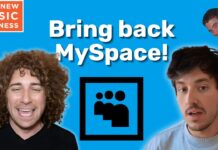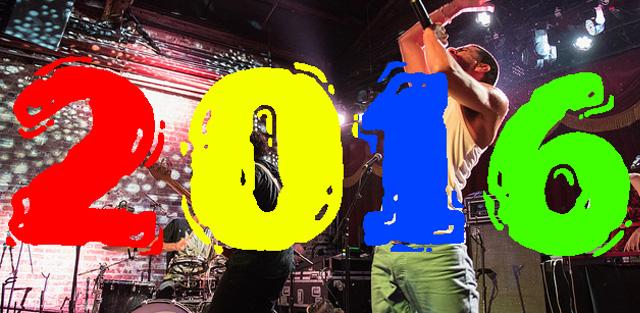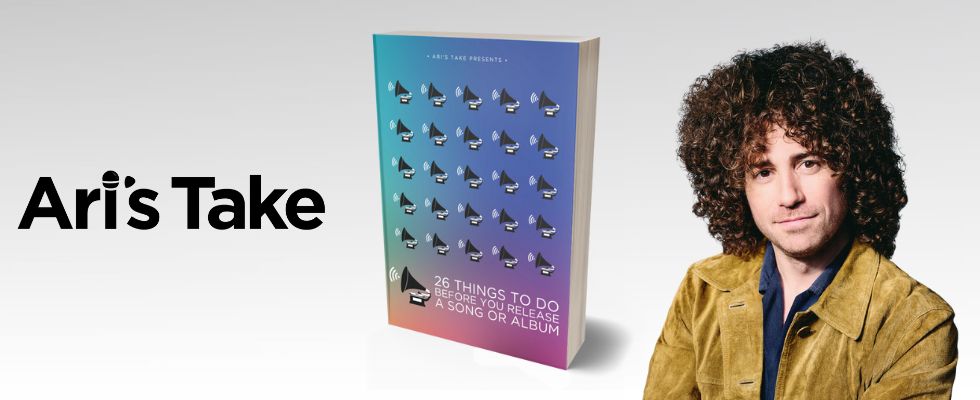I’m a “curator” on Fluence. That means, if you want to pay me to listen and review your music (with the possibility of sharing it), you can pay me to do it. 80% of the submissions I get are not very good, 15% are good, but not great and then occasionally I receive something so stunning I have to share it. This happened today. I received a demo (Demo!) from 20 year old folk artist. Real solid stuff. I made a few critiques, commented on a few lyrics and his finger picking and then went to tweet it out to my 39,000 followers. But I couldn’t find him to tag. So, I didn’t tweet the song.
Twitter is a community. And if you tweet about someone and don’t include their handle it’s not only disrespectful, but looks lazy. Like you didn’t try to find them. It can be even a bit insulting to avid Tweeters. The only thing worse than not including their handle is including the incorrect handle. I always triple check who I’m tagging when tweeting about someone. I know you’re thinking, “but Ari, why not just tweet the song out without his handle?” Yeah, well, because the dude is clearly not ready for prime time. The songwriting is truly heart wrenching, but if you’re going to pursue an original music career, you have to have some essential tools. These vary based on target demographic, genre, location and career goals, but there are 9 essential things every original act needs to have in 2016.
In 2008, if you didn’t have a Myspace, you didn’t exist. Well, things change quickly. Going into 2016 make sure you have these 9 essentials:
1) A Website
The only consistent online tool that remains to be a solid necessity in an ever changing social world is the official artist website. You rent space on a social platform (and they can raise the rent or kick you off – or crumble – at any moment), you own your website real estate. A website in 2016 should be the hub for all official information: tour dates, discography, official photos, videos and music. Gone are the days of needing to pour way too much money, time and stress into an overworked web developer. Platforms like Bandzoogle and Squarespace make creating and updating a website completely painless. All professional outfits need a website. Yes, still in 2016.
2) Great Photos
There’s no point in having a cool website if your photos are crap. Spend some money and hire a professional music photographer and get some great promo photos. People (unfortunately) will judge you first based on your image before ever listening to a song or buying tickets to your show. Make sure the vibe of the photos align with your sound and entire brand. Do not underestimate the importance of professional photos. If you want to be a professional outfit you have to look like one – onstage and online.
2) A Facebook Page
Even though the teens have fled, Facebook is still the most important social network for the general populace and is where most of the industry goes first to see what kind of online presence you have. Spend the next couple weeks cleaning it up. Update your tabs and apps. Don’t have 3 show apps because you couldn’t choose between BandsInTown, SongKick and ReverbNation. Pick one. Pick a great music player. Pin your most informative post to the top of your profile. And feature a video you upload TO Facebook. Update your About section with a new bio and influences and respond to your messages. Go through your posts and evaluate which have done well (good interaction) and which fell flat. Facebook pushes posts that get immediate engagement to more of your followers and squashes the posts that don’t get a response right out of the gate.
3) A Twitter Profile
Twitter is now an influencer network. You are an influencer so you must be on it and active. Don’t use it like Facebook or Instagram. You must approach Twitter how it’s intended to be used. It’s a community. Be a member of the community and follow the etiquette. You wouldn’t go to a funeral in a Hawaiian shirt; you wouldn’t mosh at a folk concert; you wouldn’t wear a wetsuit to a backyard pool party. Don’t use Twitter like you use Facebook, Instagram, Tumblr or Snapchat. These are separate communities and there is different etiquette.
Your Twitter feed should not be a newsfeed of links sent from other sources like Facebook, Instagram, BandsInTown and Tumblr. Don’t link Facebook to Twitter. It’s sloppy and annoying. A tweet is limited to 140 characters. There’s nothing more frustrating than seeing the fb.me link. That means the only way to actually read the entirety of the post is clicking through to Facebook and most likely login on the browser it pushes to (which isn’t the Facebook app on a phone). Too many steps. Learn and use Twitter as it’s meant to be used.
Pick 10 of your favorite (new) musicians who have come out in the past 5-10 years, follow them on Twitter and see how they use it. Like you transcribe solos and dissect your favorite songs, use the same level of critical analysis approaching how to use social media. Study the greats. Allow them to influence not just your music but your social media too. There’s a reason they’re succeeding. Study it.
If nothing more, have a presence so people can interact with you and tag you. You don’t need a play by play of your day, but find your voice and use it.
4) Instagram
Instagram is hot and getting hotter. Everyone thought that when Facebook bought it for a billion dollars three years ago that it would lose its cool factor and the kids would leave. Everyone couldn’t have been more wrong. With more than 300 million active monthly users, it has surpassed Twitter. According to a new Piper Jaffray survey, 1/3 of American teens have picked Instagram as their most important app (Twitter was 2nd, Snapchat was 3rd, Facebook a distant 4th). Invite your fans into your world a little closer via Instagram.
+10 Reasons Why You’re Failing At Instagram
5) A YouTube Presence
You don’t need to be a YouTuber. That’s a lifestyle choice and a full-time job. But you do need high quality videos on YouTube. It is still people’s number 1 destination to check out a new act. If someone searches your name on YouTube and only shaky iPhone fan shot videos with distorting sound come up, that’s not going to be a very good first impression. Curate your YouTube channel to be the best version of who you are. Whether you put up high quality music videos, live videos, rehearsals, vlogs, performance videos or behind the scenes, they must be high quality. In 2016 it’s not acceptable to just sit in front of your MacBook and play an acoustic song. The technology to make a high quality looking and sounding video is not only available but relatively inexpensive. Invest a little time and money into mastering these programs (like Final Cut, Logic, Pro Tools) and cut together great looking videos. If you have a good lighting setup, new smartphone cameras should do, but it’s best to find someone with a DSLR camera.
You obviously can’t compete with Taylor Swift’s video production, but don’t let that intimidate you. YouTube is about connection and authenticity. Whatever you do, make it real, make it honest and make it creative.
6) A Mailing List
You rent your followers from social networks, you own your fans’ email addresses. Social networks come and go, but the one thing that has remained consistent over the years is email. Pass around the clipboard or iPad at every intimate show, offer solid incentives to signup online and send out regular email blasts (monthly is great).
Make 2016 the year you prioritize your email list.
7) All Official Releases On Streaming Services
Unless you’re Adele or Taylor Swift, withholding your music from streaming services will only hurt you in 2016. People now use Spotify, Apple Music, SoundCloud and the rest for their primary music listening. If you’re not there, you don’t exist in their eyes. They will move on. Yes, of course, still have your music available for purchase for the fans who want to purchase. Give your fans options and allow them to consume music in the way that makes sense to them. If you’re looking to grow and develop your fanbase streaming is where you need to be.
Curated playlists are becoming the new radio. Bands are starting to break from popular playlists (and blogs) long before radio, YouTube or TV. Obviously, if you’re not on the streaming platform, you have no chance of getting included in playlists. The streaming debate is over. It’s the future. Every indie artist needs to approach 2016 with a streaming-first game plan.
8) A Great Live Show
Oftentimes younger artists get caught up in the social media existence of their careers and forget that the live show is still the most powerful experience a fan can have with you. If a fan actually gets out to your show you will either be their new favorite artist or a forgettable act with a couple songs they kind of like.
No YouTube video can replace the electrifying energy of the live show.
“Bands should not be trying to play in front of 1,500 people because they’ve got one song in heavy rotation and they literally weren’t a band a year and a half ago. They might get away with it for a little while, but I can tell you a bunch of bands that I heard on the radio two years ago, you ain’t hearing about them now. Because they couldn’t bring it live.” – Bruce Flohr, Red Light Management
9) Subscription Patronage Fan Club
If you have fans, you should have a fan club. You should give them options to support you on an ongoing basis. Invite them into your inner circle. Sure, crowdfunding a bulk amount of money for an album is still a fine way to fund a major project, but all of those funds invariably get used up on the big project. A fan club via Bandcamp (they call it subscription) or Patreon (they call it patronage) allows fans VIP access to exclusive content where they can support you on a deeper level.
This is Crowdfunding 2.0 in the digital age, but the idea of a fan club is nothing new. Even a fan club of 50 (at $5 a month) is substantial extra income and will get your fans to connect with you on a much more emotional (and lucrative) level.
+How To Turn Your Fans Into Paying Subscribers
What About Snapchat and Periscope?
So, everyone these days is talking about Snapchat and Periscope. And what about Pinterest and Tumblr? Even though Snapchat is getting 6 billion daily video views, it’s very limiting. To some artists, like DJ Khaled, Snapchat can actually be a “key to success” as the New York Times put it.
If you’re targeting primarily teens, you really should be on Snapchat. It’s teens #2 most important app. And may surpass Instagram in 2016. So it’s definitely worth paying attention to. I wouldn’t classify Snapchat as an essential just yet, but it’s getting close. It’s worth at least registering your band name and figuring out if it makes sense for your project just yet.
Live broadcasting will be what truly defines 2016.
Now that Facebook Live, Periscope (by Twitter), Meerkat and YouNow are reaching a critical mass, it’s definitely worth figuring out how you can use live streaming to engage with your fans. Matt Nathanson debuted a new song off of his album by Periscoping the vinyl test pressing on his home turntable. He then took some questions and showed off his massive vinyl collection while geeking out with fellow music lovers over favorite 80s records he owned.
Make 2016 the year you turn your band pro – onstage, online and on point.


















